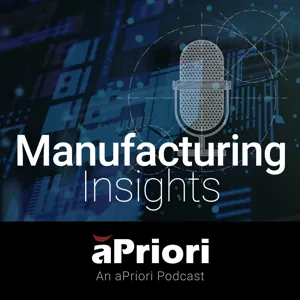Hitting Sustainability Goals with aPriori and PTC

The commitment to environmental sustainability is rippling through the manufacturing world, from lifecycle management initiatives, to promises on behalf of executives to reduce the carbon footprint of their products. But it takes smart tools to give manufacturers the kind of data they need to evaluate real trade-offs between cost, carbon and design functionality. That's why PTC and aPriori have partnered together to deliver sustainability insights directly to design engineers, cost engineers, and sourcing professionals right within the software they're already using every day, such as PTC Creo and other 3D CAD products.
Catherine Knicker guides PTC Strategy as the Chief Officer of Strategy and Marketing. We spoke at aPriori's recent Manufacturing Insights Conference, where Catherine Knicker explained how PTC helps industrial and manufacturing companies incorporate sustainability throughout their entire product lifecycle, from design and manufacturing to service and end of life. We spoke about the skills and data that front-end designers need to really make a measurable impact on environmental goals. And she talked about how successful companies are empowering their decision-makers with the data and the tools they need to make the best real-time decisions for their business and for the planet.